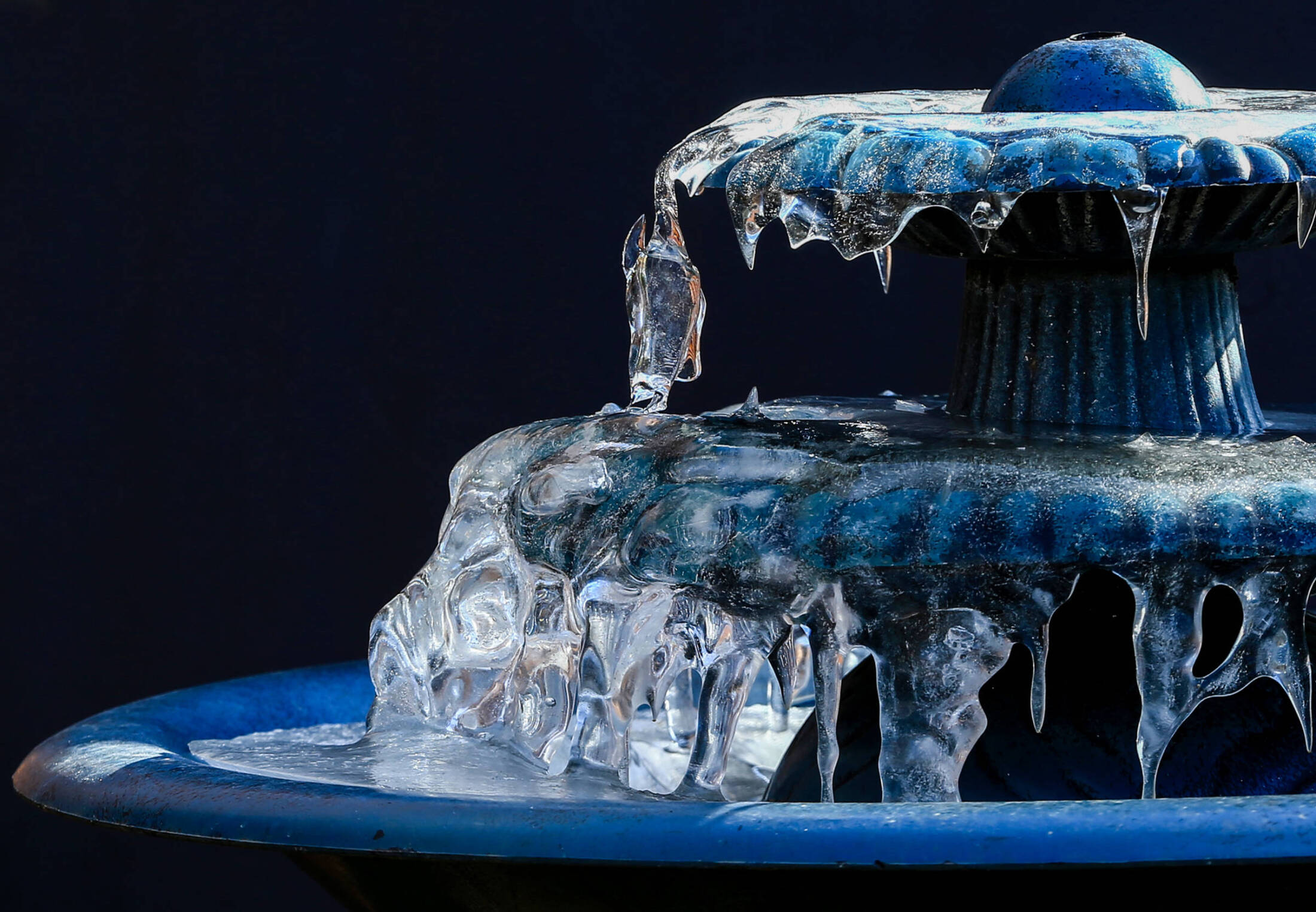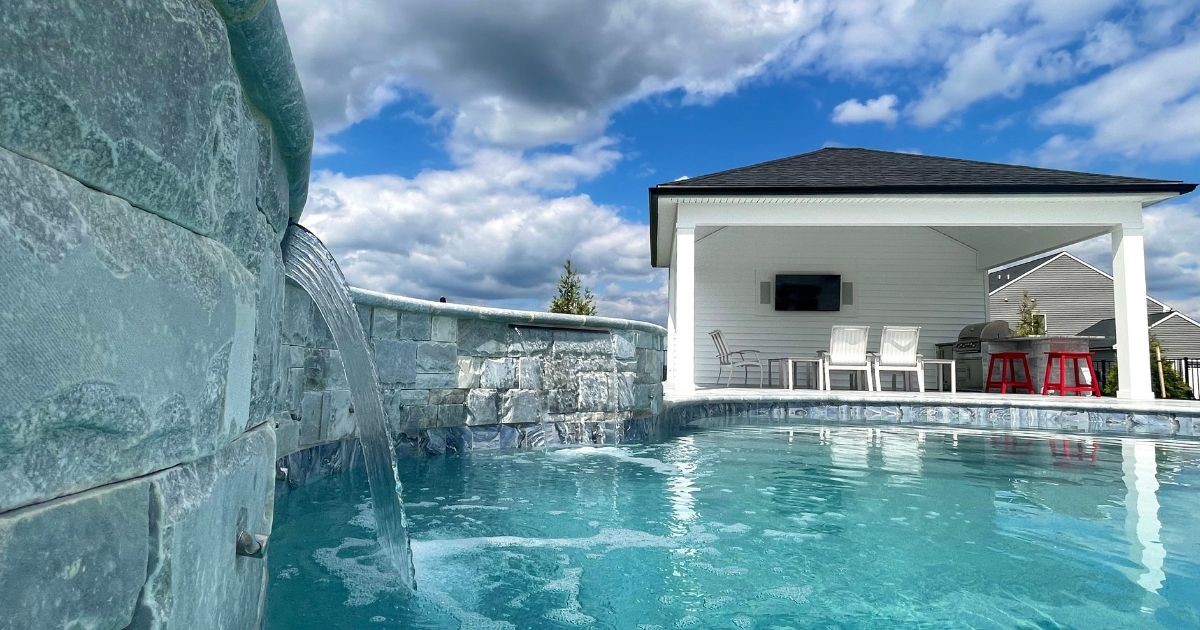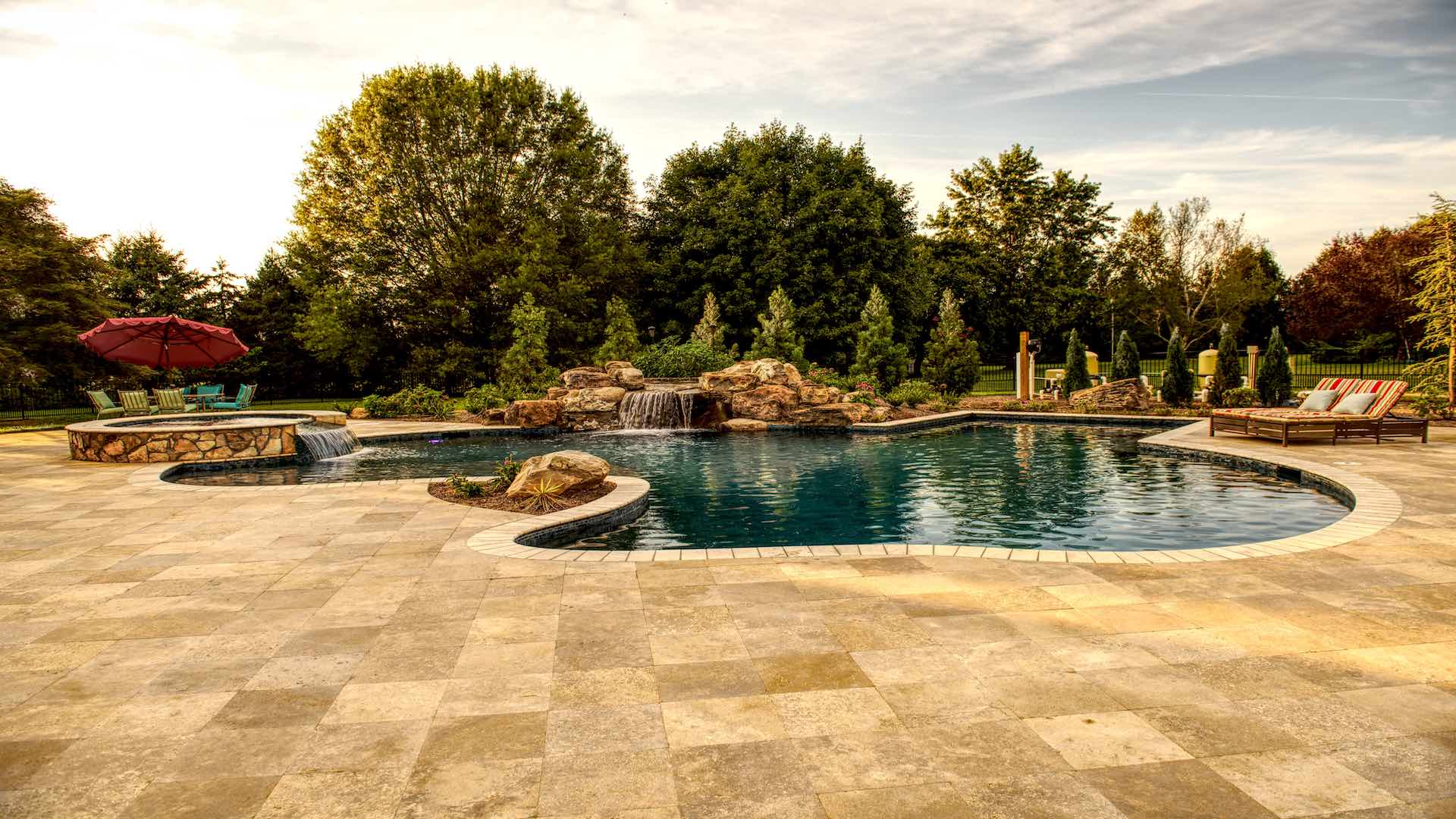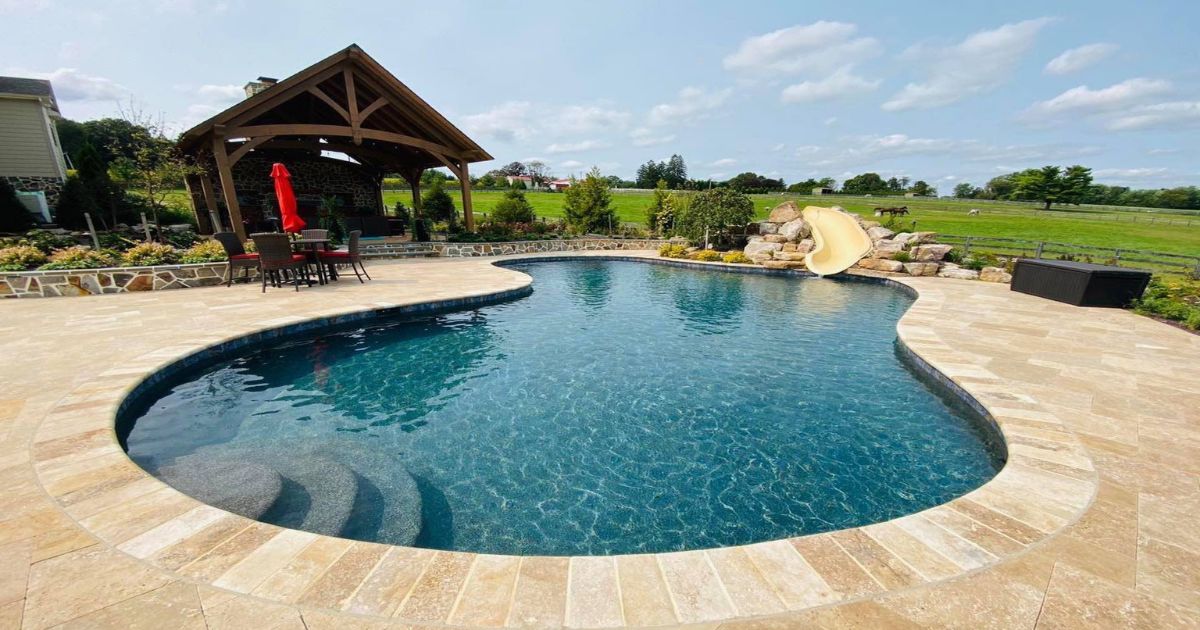If 2024 is the year you turn your backyard into a pool paradise with an…

Winterizing Your Water Features
The sound and beauty of running water in your landscape during warmer weather can’t be beat. But whether it’s a small garden pond, waterfall, or fountain, once the weather starts turning cooler, you need to add winterizing your water features to your list of things to do outdoors.
How to Winterize Your Water Features
Clear out the plants.
You should pull out the plant life in and around your pond or stream by the time of the first frost. Once you’ve pulled out the plants, you should be able to see the bottom of the pond. Clear all the plant debris such as leaves and twigs from the pond’s bottom surface. Clean the bottom of the pump vault if you have a “pondless” water feature.
Clear any algae.
If your water feature has algae on the water’s surface or has built up underwater, you should use a water-activated granular algaecide. Be careful to read the directions all the way through, and then follow them, step by step. Persistent and stubborn algae staining means you need to drain the pond or vault to
Drain the water lines and the pump.
Before you shut down a pond, fountain or other small landscape water feature, make sure that you disconnect and drain all the water lines as well as hard-to-reach recesses and small spaces. You’ll need to drain your water features while it’s still above freezing, so that any water left will evaporate from the lines. Draining everything before the first frost is ideal.
Remove and store the pump.
If you leave a water pump outdoors, it can freeze, resulting in a cracked casing. That allows water to get into the inside workings of the pump, including where the electric lines are. If you leave the pump out and it freezes, when you go to turn it back on in the spring, it may not even start up, but if it does, it will soon need to be replaced. The smartest thing you can do is just remove and store the pump for the winter. Your basement or attached garage where the temperatures don’t go below freezing would work.
And last but not least, while you’re outside, be sure to disconnect your hose(s) from the house and let both the hose and the outside faucet drain. Then store the hoses and hose reels for the winter. Leaving a hose connected to your home when the temperatures drop below freezing can result in frozen pipes or burst pipes.
Winterizing Your Inground Pool and Spa
Getting your inground pool and spa ready for winter is a little more complicated than winterizing your landscape water features. Winterizing your inground pool can be a do it yourself job if you’re careful, but there are some steps best left to the professionals. If you have a pool waterfall or pool fountain, you would winterize it at the same time as your pool.
You’ve invested time and money in your pool and landscape water features. By taking precautions and getting things ready for winter, you’re protecting your investment so everything will be in top shape once the warmer weather of spring returns.




